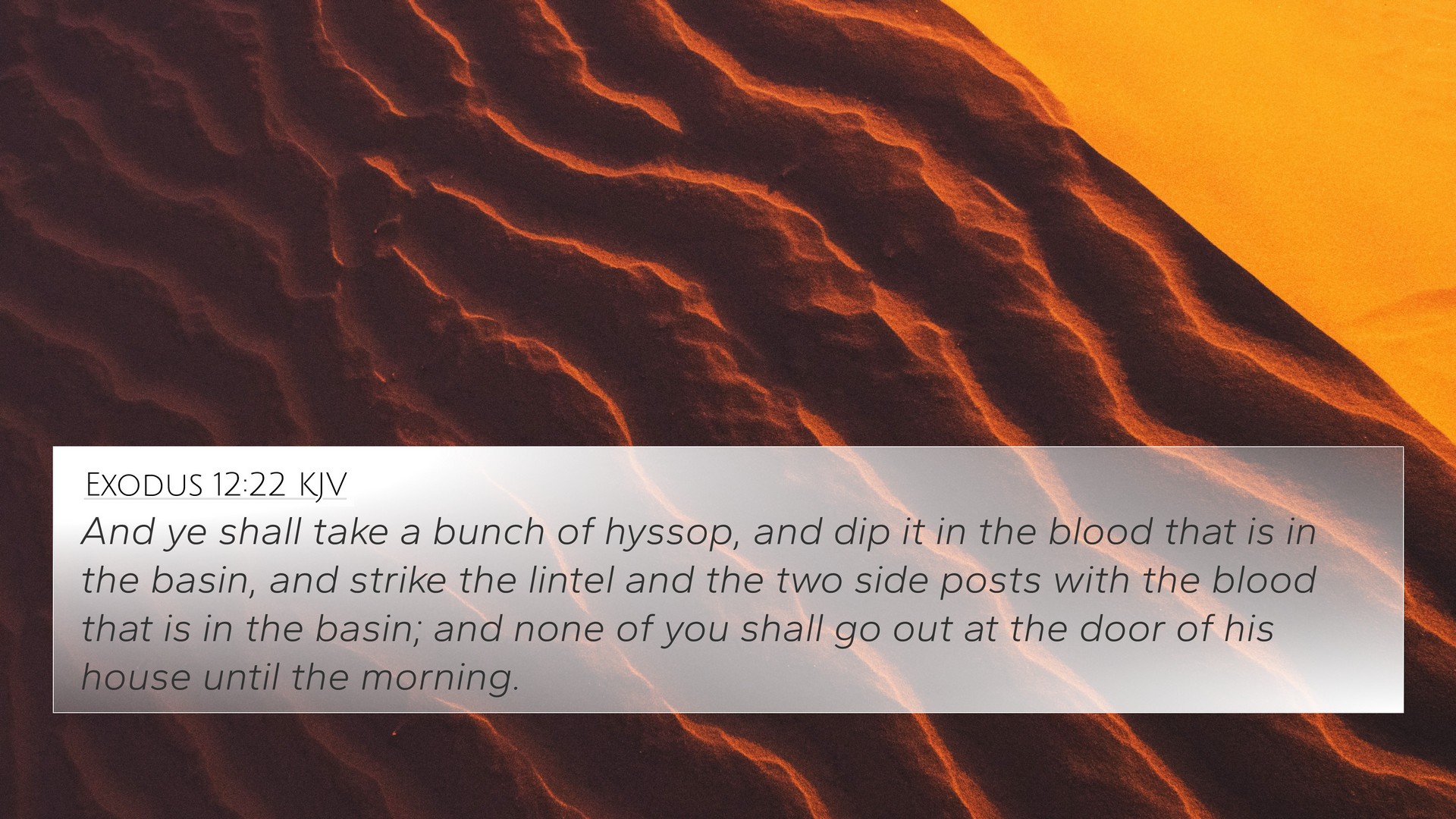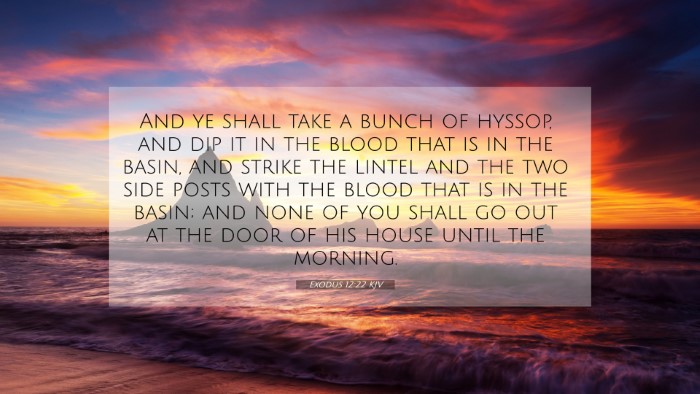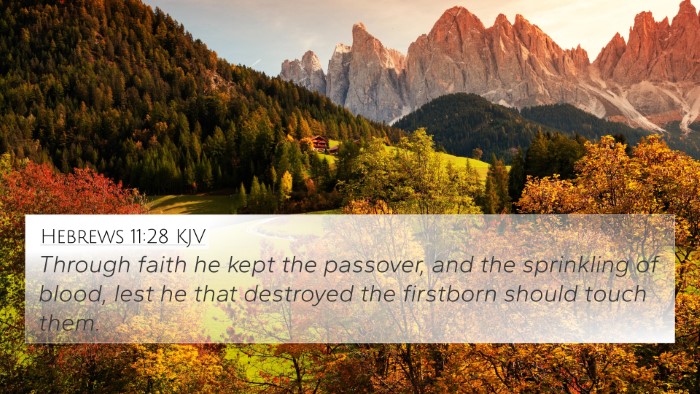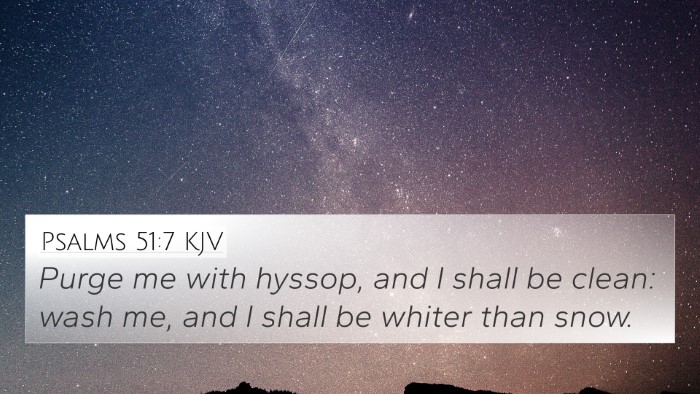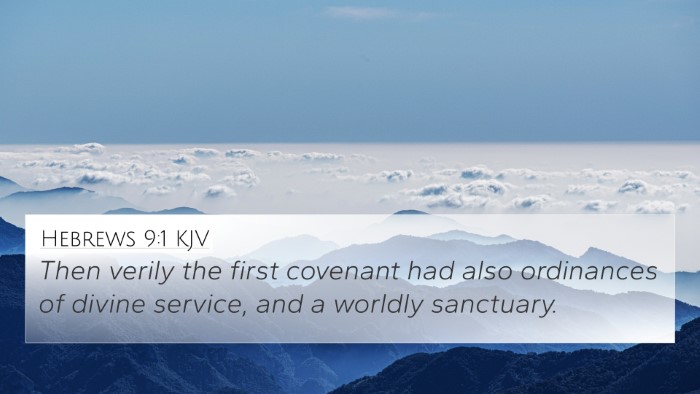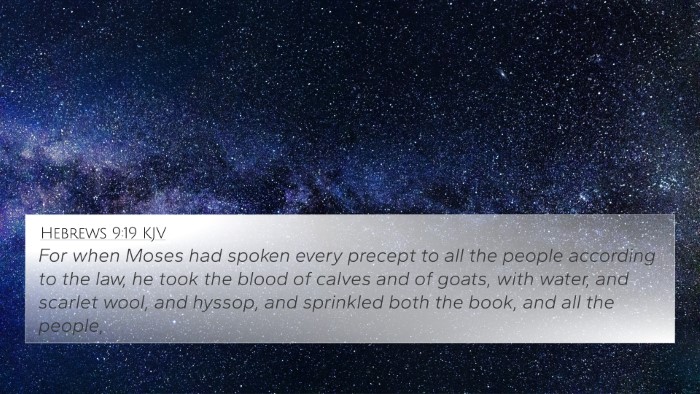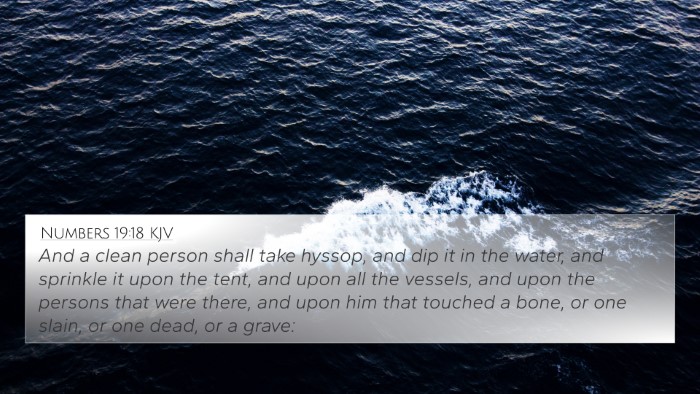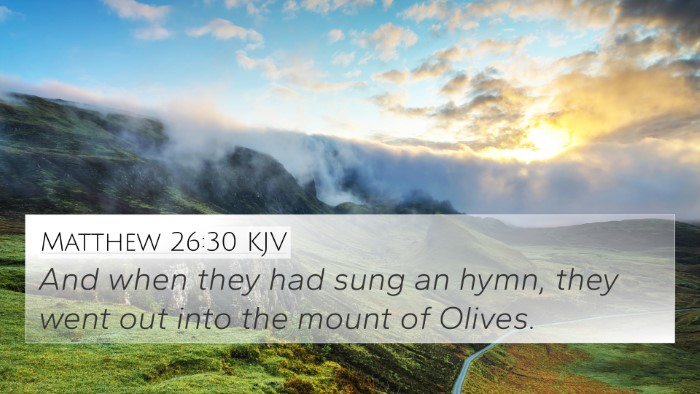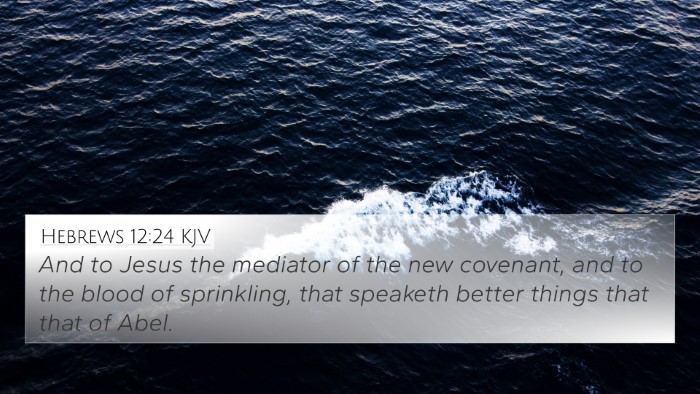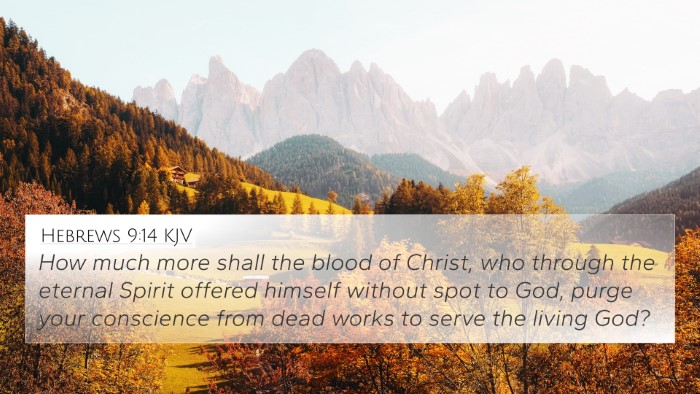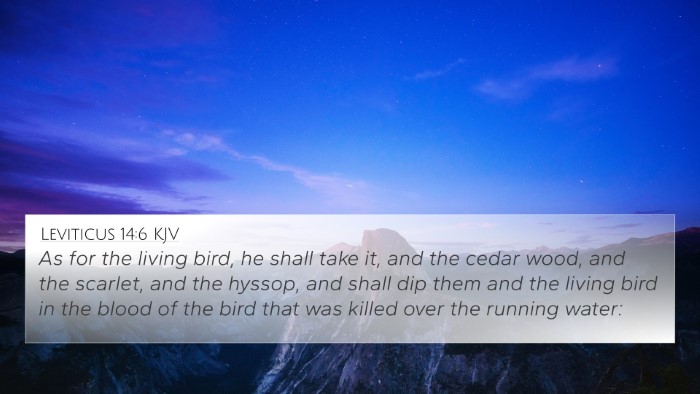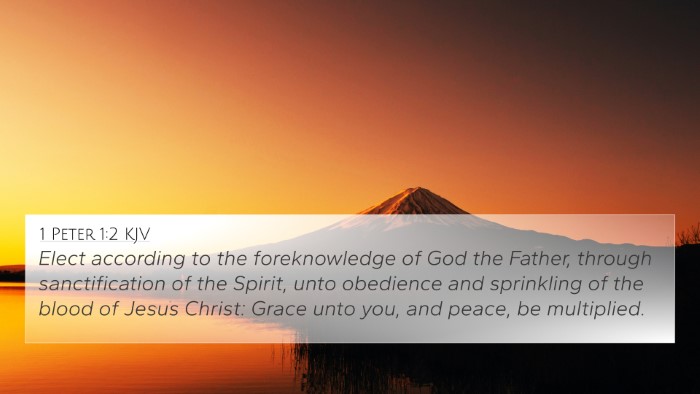Understanding Exodus 12:22
Exodus 12:22 states: "And you shall take a bunch of hyssop, and dip it in the blood that is in the basin, and strike the lintel and the two doorposts with the blood that is in the basin; and none of you shall go out of the door of his house until morning." This verse plays a crucial role in the narrative of the Passover, which is foundational to the Jewish tradition and has profound implications for Christian theology.
Thematic Overview
This verse informs us of the instructions given to the Israelites by God through Moses on the night of the Passover before their liberation from Egyptian bondage.
Commentary Insights
Matthew Henry's Commentary
Matthew Henry highlights the significance of the hyssop and the blood, noting that hyssop was commonly used in purification rituals and signifies cleansing. The application of blood on the doorposts represents God's protection over the Israelites, marking them as His people, hence safeguarding them from the impending judgment against Egypt (the death of the firstborn).
Albert Barnes' Notes
Albert Barnes elaborates that this ritual emphasizes obedience to God’s command. The act of striking the doorposts with blood serves as a definitive sign of faith for Israelites. Barnes points out that it demonstrates a crucial aspect of God's covenant with His people—His promise of deliverance through their faith and actions.
Adam Clarke’s Commentary
Adam Clarke adds to the understanding by stressing the importance of remaining indoors until morning. This symbolizes the steadfastness and reliance on God’s protection, which speaks to a broader lesson of faith, patience, and trust during divine deliverance. The blood signifies both a sacrificial act and a prelude to Christ’s ultimate sacrifice.
Bible Verse Cross-References
- Hebrews 11:28: “By faith he kept the Passover and the sprinkling of blood, lest he who destroyed the firstborn should touch them.” The act of faith shown by the Israelites mirrors their salvation.
- 1 Corinthians 5:7: “For indeed Christ, our Passover, was sacrificed for us.” This connects the Passover with Christ’s sacrifice, illustrating the typology present in Exodus 12.
- John 1:29: “Behold! The Lamb of God who takes away the sin of the world!” This verse highlights Jesus as the sacrificial lamb, akin to the lamb used in the Passover.
- Matthew 26:28: “For this is My blood of the new covenant, which is shed for many for the remission of sins.” This reflects on the significance of blood in both covenants.
- Romans 3:25: “Whom God set forth as a propitiation by His blood, through faith, to demonstrate His righteousness.” Indicates the role of blood in redemption.
- Revelation 7:14: “These are the ones who come out of the great tribulation, and washed their robes and made them white in the blood of the Lamb.” Highlights the cleansing and redemptive power of sacrificial blood.
- Exodus 12:13: “Now the blood shall be a sign for you on the houses where you are. And when I see the blood, I will pass over you; and the plague shall not be on you to destroy you when I strike the land of Egypt.” Reinforces God's promise of protection through blood.
Connections Between Bible Verses
The connections among these verses and Exodus 12:22 show an inter-Biblical dialogue showcasing themes of faith, sacrifice, and deliverance. This passage is a precursor to the New Testament revelations about Jesus and His redemptive work.
Cross-Referencing Biblical Texts
Using tools for Bible cross-referencing can deepen understanding. A Bible concordance or cross-reference Bible study can help identify related themes, such as salvation and covenant, as depicted in Exodus 12:22. Techniques like thematic Bible verse connections and referencing can facilitate a clearer picture of God's overarching narrative throughout Scripture.
Bible Cross-Reference Guide
To fully grasp the depths of Exodus 12:22, it is beneficial to utilize a Bible cross-reference guide. This allows us to connect similar themes and teachings across both Testaments, fostering a greater appreciation for the cohesive message of redemption found in the Bible.
Conclusion
In summary, Exodus 12:22 serves as a profound illustration of God’s protection, the necessity of obedience, and the foreshadowing of the New Testament's sacrificial system embodied in Christ. Cross-referencing this verse leads to a richer understanding of its implications on both an individual and theological level.
